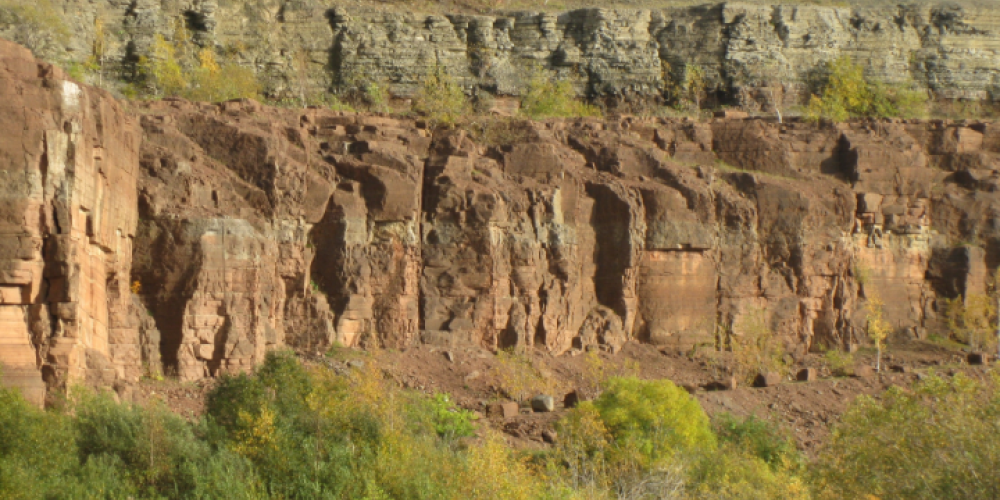
Over the last few decades, researchers have begun to understand that the evolution of life on Earth strongly depends on astronomical events. The best-known example of this realization is provided by the impact of a 10 km sized asteroid 66 million years ago that instantaneously led to a mass extinction that included the demise of the dinosaurs. Now, scientists have now detected another example of how extraterrestrial events can affect life on Earth. Approximately 470 million years ago, a 150 km asteroid between Jupiter and Mars was crushed as the result of a collision into fine-grained dust that spread throughout the Solar system. As a result of this dust significantly less sunlight reached the Earth, resulting in a peculiar ice age. The climate changed from more or less similar conditions all over the globe to become divided into climate zones – from arctic conditions at the poles to tropical conditions at the equator. Through this climate change, triggered by the exploded asteroid, many new ecosystems formed with a high diversity of invertebrates as an adaptation to these new circumstances.
“In geology, the present is the key to the past. Our contribution was to study the current flux of extraterrestrial material reaching Earth by looking at rare mineral phases in micrometeorites recovered from Antarctica. By then comparing the abundance of these phases to those found in rocks formed 470 million years ago, we could get a better grasp of how much ET dust rained on the Earth at that time", says Steven Goderis (VUB), one of the lead authors of this study.
Global warming continues as a consequence of carbon dioxide emissions and the temperature rise is greatest at high latitudes. According to the Intergovernmental Panel on Climate Change, we are approaching a situation that is reminiscent of the conditions that prevailed prior to the asteroid collision 470 million years ago. The last decade or so, researchers have discussed different artificial methods to cool the Earth in the case of a major climate catastrophe. Modelers have showed that it would be possible to place asteroids, much like satellites, in orbits around Earth in such a way that they would continuously liberate fine dust and hence partly block the warming sunlight.
“We were expecting that the global cooling triggered by the ET dust would have negatively impacted life, but it was actually profitable for biodiversity at first. But when the cooling became stronger, this resulted in a global ice age and possibly a mass extinction. This shows that we have to be careful in proposing solutions appealing on the short-term, but possibly harmful on the long-term”, adds Vinciane Debaille (ULB).
The study is published in the scientific journal Science Advances and is highlighted in an editorial in Science.
The study was led by Lund University, with important contributions from Vrije Universiteit Brussel, Université Libre de Bruxelles, and Royal Belgian Institute of Natural Sciences, while the following Universities and organizations were also involved in the study: California Institute of Technology, The Field Museum of Natural History, University of Chicago, The Ohio State University, Russian Academy of Sciences, Federal University Kazan, Durham University, Chinese Academy of Sciences, Center for Excellence in Comparative Planetology China, ETH Zürich, Naturmuseum St. Gallen Switzerland, and Woods Hole Oceanographic Institution.